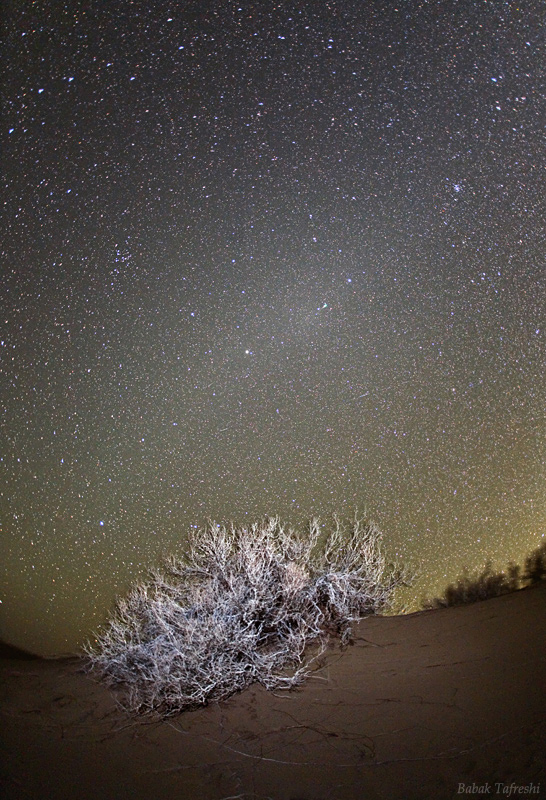Comet and Gegenschein
Description
In a desert starry night, a band of light appears crossing the sky. The dust disk extending out to Jupiter’s orbit produces a faint glow all along the ecliptic, the path of the sun in the heavens. This known as zodiacal light decreases in intensity with distance from the Sun, but on very dark nights it has been observed in a band completely around the ecliptic. In fact, the zodiacal light covers the entire sky, being responsible for 60% of the total skylight on a moonless night. There is also a very faint, but still slightly increased, oval glow directly opposite the Sun known as the gegenschein (German for “counter glow”) which can be seen 180 degrees around from the Sun in an extremely dark sky. Here a deep exposure in Maranjab sand desert of Iran clearly shows the gegenschein in constellation Leo at the image center as a softly glowing oval region a few degrees wide and 10-15° in length, oriented along the plane of the ecliptic. The gegenschein is sunlight back-scattered off small interplanetary dust particles. These dust particles are millimeter sized splinters from asteroids and orbit in the ecliptic plane of the planets.
The timely image also captured Comet Lulin, the green elongated “star” near the center of gegenschein. Also notable in this wide angle image is planet Saturn at the lower left of gegenschein and Beehive (M44) star cluster at the upper right of the light and the large Coma star cluster at left.

comments (0)